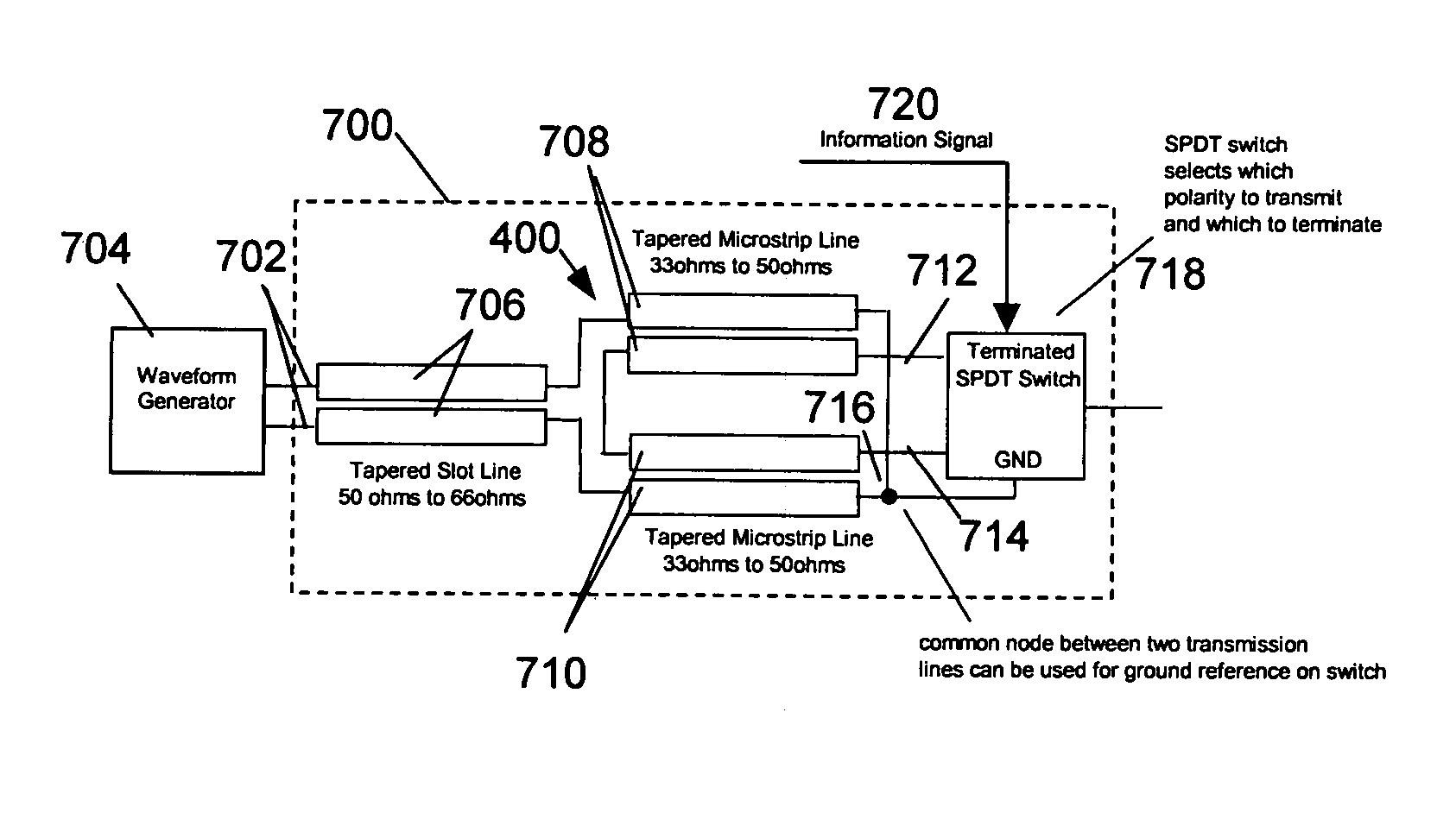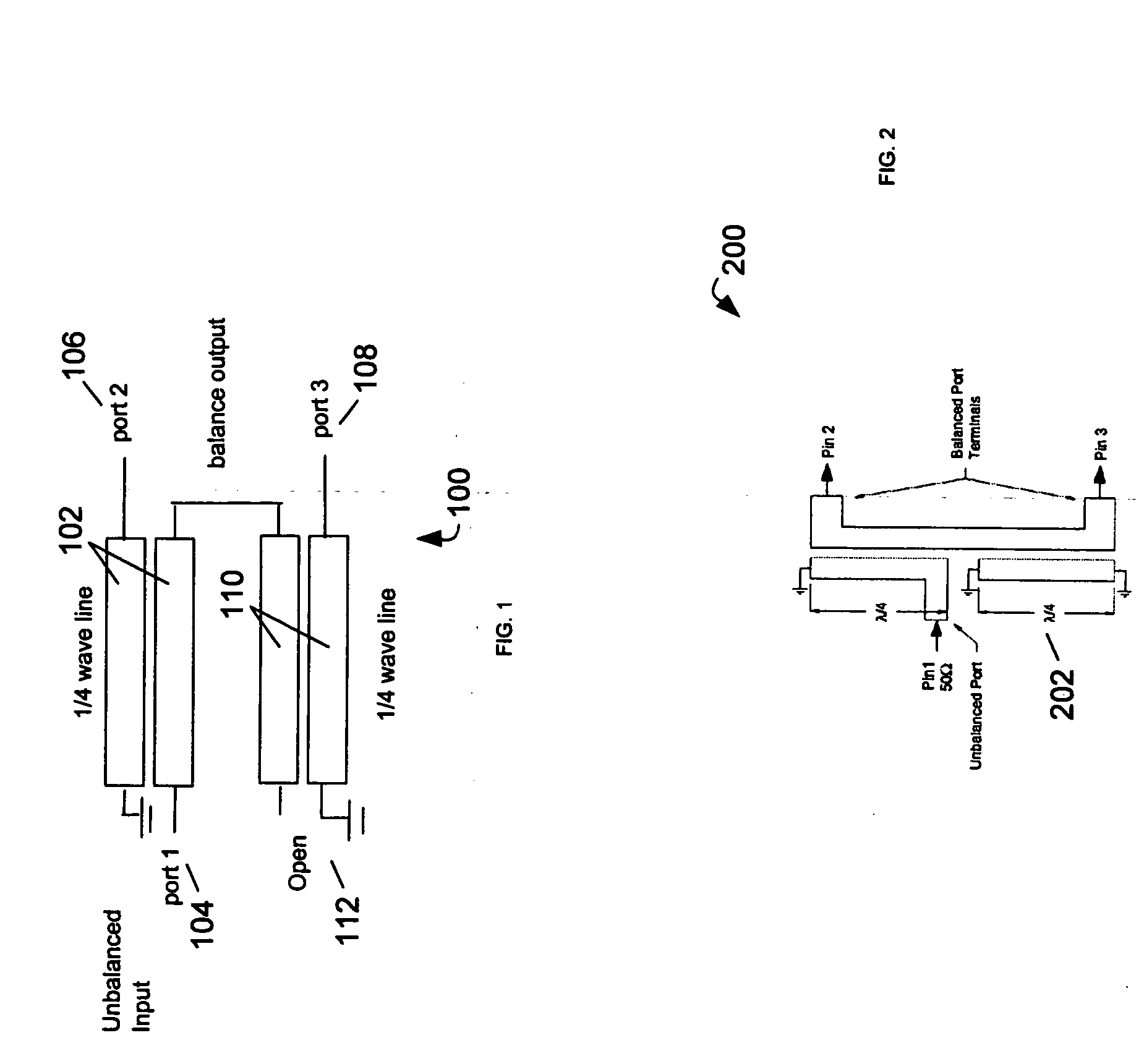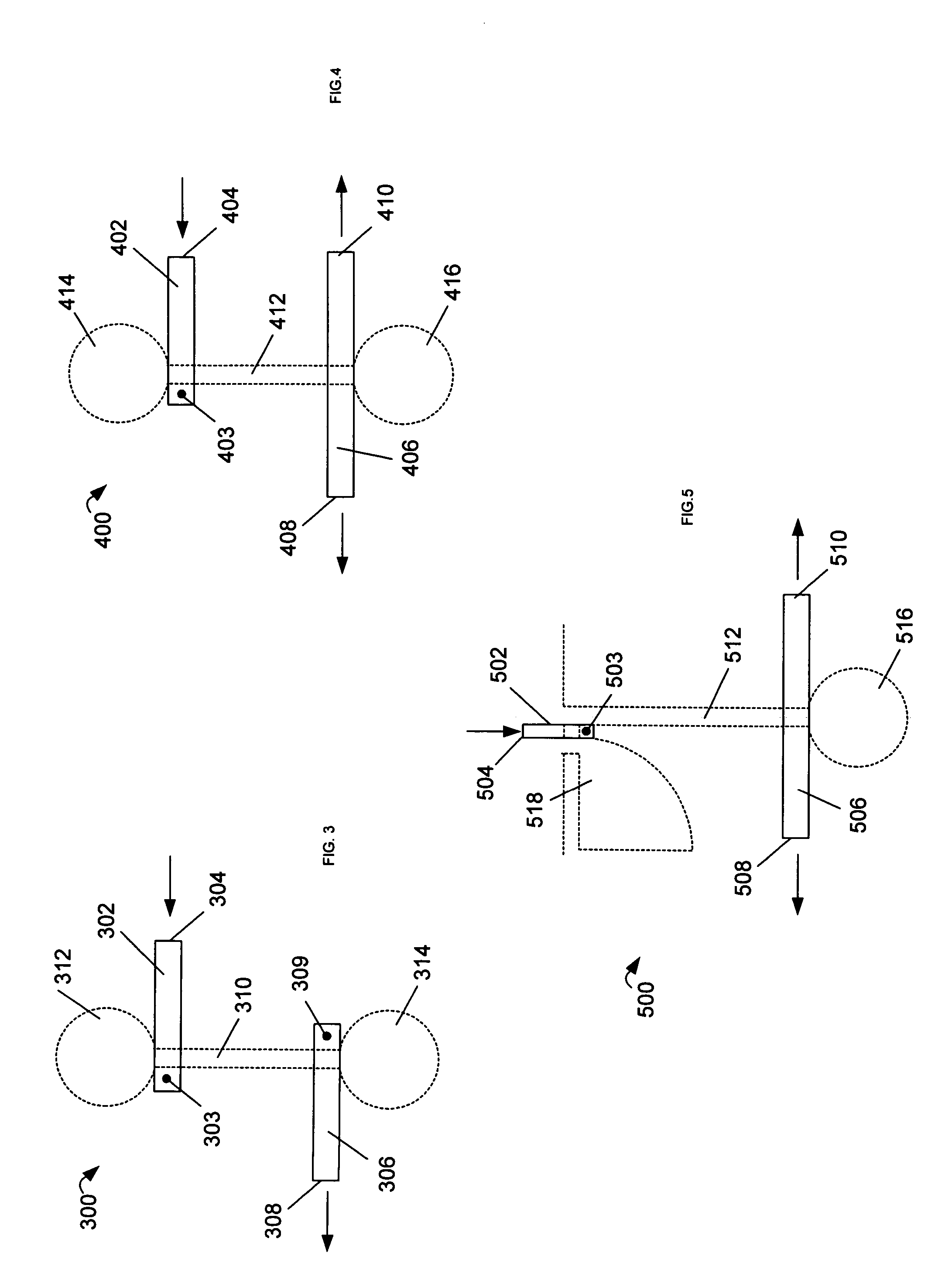Bi-phase modulator for ultra wideband signals
a bi-phase modulator and ultra wideband technology, applied in the field of communication and radar systems, can solve the problems of large noise, large noise, and difficult to precisely manufacture, and achieve the effect of promoting excellent broadband phase and amplitude balance and reducing peak voltage swings
- Summary
- Abstract
- Description
- Claims
- Application Information
AI Technical Summary
Benefits of technology
Problems solved by technology
Method used
Image
Examples
Embodiment Construction
[0032] The bi-phase modulator of the present invention is used for modulating UWB signals in response to the state of an information signal. As herein defined, a UWB signal comprises any signal having relative bandwidth greater than or equal to 10% or defined as a UWB signal by communication rules and / or regulations of a governmental agency, for example, Federal Communications Commission (FCC) rules governing Part 15 signal emissions. UWB signals include, but are not limited to PPM, frequency, phase (e.g., flip) and amplitude modulated (or a combination thereof) signals that have an ultra-wide bandwidth. An information signal used for modulating the UWB signals according to the present invention comprises at least one of a data signal and a channelization signal. A data signal can correspond to binary data bits communicated over a communication channel. A channelization signal defines a communication channel, for example, a time hopping code. In one simple implementation, the bi-pha...
PUM
 Login to View More
Login to View More Abstract
Description
Claims
Application Information
 Login to View More
Login to View More - R&D
- Intellectual Property
- Life Sciences
- Materials
- Tech Scout
- Unparalleled Data Quality
- Higher Quality Content
- 60% Fewer Hallucinations
Browse by: Latest US Patents, China's latest patents, Technical Efficacy Thesaurus, Application Domain, Technology Topic, Popular Technical Reports.
© 2025 PatSnap. All rights reserved.Legal|Privacy policy|Modern Slavery Act Transparency Statement|Sitemap|About US| Contact US: help@patsnap.com



